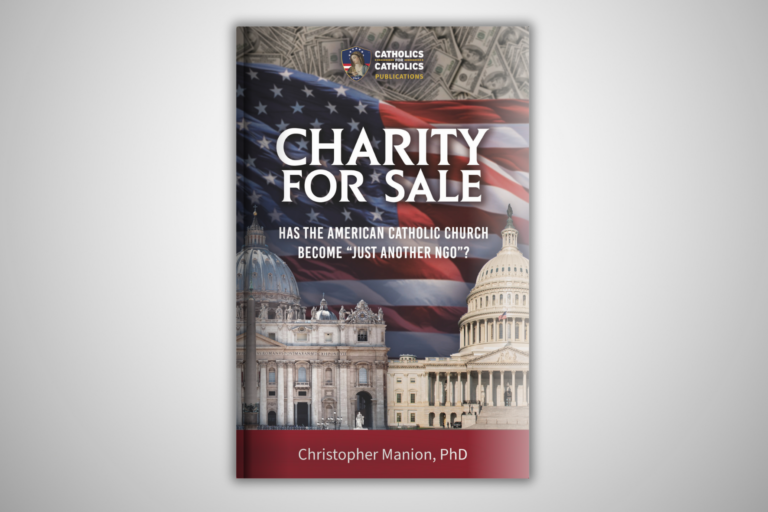“Reproductive health…implies that people are able to have a responsible, satisfying, and safe sex life and that they have the capability to reproduce and the freedom to decide if, when, and how often to do so” (Progress in Human Reproduction Research, no. 30, 1994, World Health Organization (WHO).
Contraceptive usage
Contraceptive usage among higher income women “at risk of unplanned pregnancy” in the U.S, has risen to 92 percent while 89 percent contraceptive usage occurs among lower income women. Among the poor, 80 percent of women use contraceptives for “pregnancy prevention” (Washington Memo, The Alan Guttmacher Institute, 25 January 1995, 3). According to the U.S. National Center for Health Statistics, contraceptive usage among women is as follows:
Age 15–19: 52% pill, 44% condom, *1% periodic abstinence, *3% other methods
Age 20–24: 55.4 % pill, *0.8% IUD, *0.6% diaphragm, 25.3 % condom, 2.8% periodic abstinence, 5.3% other methods
Age 25–29: 47.3% pill, *0.4% IUD, 2.3 % diaphragm, 19% condom, 2.7% periodic abstinence, 5.9% other methods.
Age 30–34: 23.9 %pill, *0.9% IUD, 4.7% diaphragm, 15.9% condom, 3.5% periodic abstinence, 5,4% other methods.
Age 35–39: 10.6% pill, 3.3% IUD, 3.3% diaphragm, 10.3 condom, 3.4 periodic abstinence, 5.2% other methods,
Age 40–44: *2.2% pill, *1.8% IUD, 3.8% diaphragm, 9.2% condom, *1.6% periodic abstinence, 2.9 Other methods
(*Figure does not meet standard of reliability or precision; Vital and Health Statistics of the Centers for Disease Control and Prevention, National Center for Health Statistics, 6.)
Sterilization
In 1990, of those between the ages of 20–24, 8.0% of the women and 1.8% of the men have been sterilized; by age 25–34, the numbers rise to 17.4% of the women and 5% of the men; by age 35–39, those sterilized include 44,2% of the women and 19.8% of the men; of the US population aged 40–44, 52% of the women and 26.5% of the men have been sterilized (Linda S. Peterson, M.A., “Contraceptive Use in the United States,” Advance Data, no. 260, 14 Feb, 1995, Vital and Health Statistics, Center for Disease Control and Prevention, National Center for Health Statistics).
Abortion
According to the Alan Guttmacher Institute (AGI), a Planned Parenthood-associated research organization, 1,529,000 abortions were performed in 1992, a decline from 1,600,000 million abortions performed annually. (Stanley K. Henshaw, Jennifer Van Vort, “Abortion services in the United States,” Family Planning Perspectives, vol. 26, no. 3, May/June 1994, Alan Guttmacher Institute, 100–106, and 112). AGI also reported that 58% of the abortions had been performed on women under the age of 25 (Facts in Brief, “Abortion in the United States,” AGI).
The study failed to note that the numbers of American women in the 15–24 age bracket declined from some 21 million in 1980 to 17.8 million in 1991. At the same time, the numbers of women aged 35–44 sharply increased from just over 13 million in 1980 to 19.8 million in 1991. With a 15% decline in the number of young women most likely to abort, and a 52% increase in the number of older women least likely to abort, the overall abortion rate for women of reproductive age (15–44) declined from 29.3 per 1,000 women in 1980 to 25.8 in 1991.
The yearly numbers of abortions performed during this time period held steady, near 1,600,000 per year, rising from 1.554 million in 1980 to almost 1.6 million in 1988 and then fell back to 1.554 million in 1991. A further, larger decline to 1,529 million abortions in 1992 is well-explained by the changed female demographics.
One million of the 1,554 million abortions performed in 1980 were performed on women ages 15–24 (less than 15 years, 15,000; 15–19 years, 445,000; 20–24 years, 549,000). Since the number of young women aged 15–24 has declined by more than 3 million over the past 12 years, a decline of 15%, one might reasonably expect a decline of 150,000 abortions in 1990 among that age group, (Sources: population figures, 1993 Statistical Abstract of the United States, the U.S. Department of Commerce, 21; 1980 abortion figures, 1992 Statistical Abstract, 74; 1991 abortion figures, Henshaw et al, “Abortion Services in the United States 1991–92,” Family Planning Perspectives, Alan Guttmacher Institute, May-June 1994, i01).
Sexually transmitted diseases (STDs)
The annual incidence of “curable, non-viral STDs” includes 4 million cases of chlamydia; 3 million cases of trichomoniasis; 1.1 million cases of gonorrhea; 120,000 cases of syphilis (includes 40,000–50,000 cases of infectious syphilis); and 3,500 cases of chancroid.
Incurable viral STDs include 500,000 to 1 million cases of HPV (20 to 40 million people are believed infected with HPV); 200,000 to 500,000 cases of genital herpes (about 31 million Americans are believed to have genital herpes); 100,000 to 200,000 cases of Hepatitis B (1.5 million Americans carry the infection); and 40,000 cases of HIV (an estimated 1 million are infected) (Contraceptive Technology Update, vol. 14, no. 6, 89).
Estimated annual number of new cases
Chlamydia: 4,000,000. Estimated cost of $78l million.
Trichomoniasis: 3,000,000. Costs unknown.
Gonorrhea: 1,200,000. Costs unknown.
Pelvic inflammatory disease: 1,000,000. Estimated cost $4.2 billion.
Human Papilloma Virus (HPV): 500,000 to 1,000,000. Incurable. Costs unknown. HPV is associated with cancer of the cervix, vagina, vulva, and anus; it is implicated in 5,000 deaths of women from cervical cancer in the United States each year (Contraceptive Technology Update, vol .14, no.6, 89). Cervical and penile cancer are strongly associated with HPV.
Epididymitis: 500,000, Costs unknown.
Genital Herpes: 200,000 to 500,000. Incurable. Estimated cost $145 million.
Hepatitis B: 100,000 to 200,000. Incurable. Costs unknown.
Syphilis: 120,000. Costs unknown.
HIV: 40,000. Incurable. Costs unknown (Facts in Brief, The Alan Guttmacher Institute, 1993).
Impact on babies
Each year, more than 100,000 babies are born with chlamydia, which can cause neonatal infections; these, in turn, can lead to chronic respiratory problems. Gonorrhea can cause blindness in newborns and such systemic diseases as meningitis and septic arthritis. About 1/3 of infants born to HIV-positive mothers are infected. Twenty percent of HIV-infected babies die by 18 months of age. One-fourth of pregnant women with active syphilis suffer a stillbirth or bear an infant who dies shortly after birth. In 1991, there were nearly 4,400 reported cases of congenital syphilis. One-half of babies who are infected with herpes-simplex virus either die or suffer neurologic damage (Facts in Brief, Alan Guttmacher Institute, 1993).
Human immunodeficiency (HIV)
Human immunodeficiency (HIV) is now the leading cause of death in among men aged 25–24 in nine U.S. states, and accounts for more than one-quarter of deaths in these age groups in four states. According to 1991 vital statistics data from the U.S. Center for Disease Control and Prevention, HIV-related problems are the leading cause of death among 24–44-year-old men in California, Connecticut, Florida, Georgia, Maryland, Massachusetts, New Jersey. New York and Rhode Island. The investigators also report that the disease is now the leading cause of death among men in 79 U.S. cities and among women in 15 cities (Family Planning Perspectives, 26, no. 3, May/June 1994, Alan Guttmacher Institute, 98).
In 1993, the total number of AIDS cases reported were 103,691; under age 1, 328; 1–4, 352; 5–9, 148; 10–14, 138; 15–19, 487; 20–24, 3,771; 25–29, 14,795; 30–39, 47,064; 40–49, 26,602; 50–59, 7,423; 60+, 2,583 (“Summary of Notifiable Diseases, United States 1993,” Morbidity and Mortality Weekly Report, 10).
Pelvic Inflammatory disease (PID)
The estimated cost of medical treatment for pelvic inflammatory disease (PID) and PID-associated ectopic pregnancy and infertility was $2.7 billion in 1990, with related costs (such as lost wages) estimated at 1.5 billion for a total annual cost of $4.2 billion. PID alone accounted for the largest portion (66%) of these costs, followed by infertility and premature death (14%) and ectopic pregnancy (5%). According to projections based on current incidence levels, the direct costs of treating PID will approach $10 billion by the year 2000 (“Total cost of PID in 1990 is estimated at $4.2 billion…,” Family Planning Perspectives, vol. 24, no.3, 137).
More than 1 million cases of PID occur in American women every year, Annually, over 275,000 women, ages 15–44, are hospitalized for sexually transmitted diseases (STD) treatment, almost 160,000 undergo surgery and up to 30,000 women undergo hysterectomies due to PID.
Women who suffer from PID are six to ten times more likely to “experience a potentially life-threatening ectopic pregnancy.” Almost half of the “88,000 ectopic pregnancies” that occur “are caused by STD infections and complications? As a result of STDs which develop into PID, approximately 100,000–150,000 “American women become infertile every year” (Contraceptive Technology Update, vol. 14, no. 6, 89).
An estimated 100,000 to 150,000 women become infertile every year as a result of an STD that resulted in PID (Facts in Brief, The Alan Guttmacher Institute, 1993).
Ectopic pregnancies
In the United States, the reported number of hospitalizations for ectopic pregnancy increased from 17,800 in 1970 to 88,400 in 1989. Based on aggregated National Hospital Discharge Service and National Hospital Discharge Ambulatory Medical Care Survey data the estimated number of ectopic pregnancies in 1992 was 108,800. The estimated rate was 4.5 per 1000 reported pregnancies in 1970. That compares with a rate of 19.7 per 1000 in 1992 (“Ectopic Pregnancy — United States 1990-1992,” Morbidity and Mortality Weekly Report, vol.44, no.3, 27 Jan. 1995). Less than half of the women who have had an ectopic pregnancy will conceive again and only 30 to 50 percent of women desirous of pregnancy will bear a live child. The risk of a second ectopic pregnancy is at least 12 to 18 percent (“Ectopic pregnancy…,” Obstetrical and Gynecological Survey, vol. 45, no. 6, June 1990).
Breast Cancer
Data from the National Cancer Institute‘s Surveillance, Epidemiology, End Results Program (SEER) showed a 36% increase in the incidence of breast cancer between 1973 and 1987. In 1987 the overall incidence of invasive breast cancer was 111.9 per 100,000 women. The Journal of the National Cancer Institute reports that women who have abortions may increase their risk of breast cancer by 50 percent. The highest risks were observed when the abortion was done at ages younger than 18 years or at 30 years or older. “Study suggests abortion increases breast cancer risk by 50 percent.” It is generally agreed that additional study is necessary in order to establish causality. (The News Herald, 27 October 1994, 8A).







